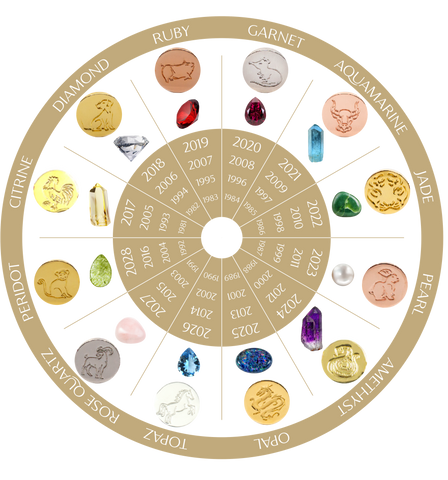The history of the Chinese Zodiac

The Chinese zodiac consists of twelve animals that first appeared in the Zhan Guo period [5th century B.C.]. No one knows the exact date when the zodiac was created, but they were officially identified during the Han Dynasty [206 B.C.–9 A.D.], which was over 2000 years ago.
Shengxiao (/shnng-sshyao/ 'born resembling'), is represented by these 12 zodiac animals. In order, they are the Rat, Ox, Tiger, Rabbit, Dragon, Snake, Horse, Goat, Monkey, Rooster, Dog, and Pig.
Chinese zodiac years begin/end at Chinese New Year and each year in the repeating zodiac cycle of 12 years is represented by a zodiac animal, each with its own reputed attributes.
2023 is a year of the Rabbit, starting from January 22nd, 2023, and ending on February 9th, 2024. Chinese culture believes that a person's horoscope, personality, and love compatibility are closely associated with his/her Chinese zodiac sign, determined by his/her birth year.
Feng Shui and Zodiac birthstones
In feng shui, Chinese astrology is used to gather information and insight on the energetics of a person and their home. One of the most well known feng shui tools include the feng shui bagua map and the five element system. These principles are interconnected with the Chinese zodiac signs and the precious stones associated with each sign/animal.

